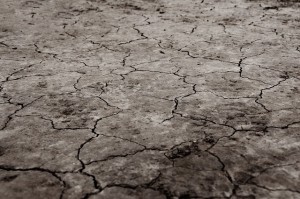 There are several steps you can take to ensure you are getting the best Homeowners insurance rates possible for the coverage you need:
There are several steps you can take to ensure you are getting the best Homeowners insurance rates possible for the coverage you need:
- Before purchasing a home, it is wise to learn about its insurance loss history. If there have been past losses, be sure to inspect the home closely to determine if proper repairs were made. The CLUE and A-PLUS databases enable insurers to check the claim history of the property as well as that of the homeowner.
- Raising your deductible is a great way to reduce your premiums. Higher deductibles on your Homeowners insurance could produce savings of 25% or more.
- Consider upgrades to your home. Do you need to modernize your heating, plumbing, and electrical systems to reduce the risk of fire and water damage? Are there upgrades you could make that would reduce the risk of damage in windstorms and other natural disasters? You might be able to save on your premiums by adding storm shutters, reinforcing your roof, or buying stronger roofing materials. Older homes can be retrofitted to make them more capable of withstanding earthquakes. If you do make home improvements, be sure to make your insurer aware of the changes.
- Improve your home security. You typically can get premium discounts of at least 5% for installing a smoke detector, burglar alarm or dead-bolt locks. Some companies will cut your premium by as much as 15% or 20% if you install a sophisticated sprinkler system and a fire and burglar alarm that signals the police, fire department, and other monitoring stations. These systems are not inexpensive and not every system qualifies for a discount. Before you buy such a system, find out what kind your insurer recommends, how much the device would cost, and how much you would save on premiums.
- Buy your Home and Auto policies from the same insurer. Some companies that sell Homeowners, Auto and Liability coverage will take 5% to 15% off your premium if combine policies with them.
- Maintain a good credit rating. Most insurers use credit-based insurance scores to determine Homeowners and Auto coverage premiums. All else being equal, a person with a good credit score will pay much less for insurance than someone with a lower score.
Contact our office today for more information.
Content provided by Transformer Marketing.
Read more
 Approximately 15 million people worldwide have a stroke every year. Of these, almost 6 million die, while a further 5 million are left permanently disabled. But although stroke is the one of the leading causes of death globally, many people remain unaware of the signs and symptoms to look out for, therefore putting their health at risk.
Approximately 15 million people worldwide have a stroke every year. Of these, almost 6 million die, while a further 5 million are left permanently disabled. But although stroke is the one of the leading causes of death globally, many people remain unaware of the signs and symptoms to look out for, therefore putting their health at risk.
The American Heart Association/American Stroke Association(AHA/ASA) state that around 1 in 3 Americans are unable to recall the warning signs of stroke.
Furthermore, a recent AHA/ASA study revealed that many women in the US are unaware of stroke warning signs, even though they are at much greater risk of stroke than men.
“This lack of recognition of stroke signs and symptoms could be a significant barrier to reducing death and disability related to stroke in the US,” says Dr. Lori Mosca, who led the study. “This is critically important because delays in getting care costs lives and hinders functional recovery.”
May is National Stroke Awareness Month – an annual campaign introduced in 1989 that aims to increase public awareness of stroke in an attempt to tackle the condition once and for all.
In line with this campaign, this week’s spotlight feature looks at the signs and symptoms of stroke, the risks associated with the condition and what can be done to increase stroke awareness.
What is stroke?
A stroke occurs when an artery or blood vessel becomes blocked, restricting blood flow to the brain. This leads to brain cell death, and, subsequently, brain damage.
How a person is affected by stroke depends on where in the brain the stroke occurs and how much of the brain is disturbed. Many stroke patients experience impaired speech, movement and memory. In severe cases, patients may suffer paralysis or even death.
There are two main types of stroke – ischemic stroke and hemorrhagic stroke. Ischemic stroke is the most common, accounting for around 87% of all strokes. This occurs when the arteries are blocked by blood clots or a gradual build-up of plaque and other fatty deposits.
Hemorrhagic stroke occurs when a blood vessel in the brain splits, leaking blood into the brain. Although only 13% of all strokes are caused by this, it is responsible for more than 30% of all stroke deaths.
The risk factors
There are many risk factors for stroke, many of which are out of our control. For example, individuals over the age of 55 are at greater risk of stroke, as are African-Americans, Hispanics and Asian/Pacific Islanders. Individuals who have a family history of stroke or TIA (Transient Ischemic Attack) are also more likely to have stroke themselves.
And women are more likely to have stroke than men. In the US, around 55,000 more women than men have a stroke every year.
Individuals with high blood pressure are one and a half times more likely to have a stroke than those with normal blood pressure.
But there are also risk factors for stroke that are within our control – one of the most important being high blood pressure, or hypertension. According to the National Stroke Association, people who have high blood pressure are one and a half times more likely to have stroke than those who have normal blood pressure.
“The No. 1 stroke risk factor is high blood pressure. It’s important to check your blood pressure regularly and talk to your doctor about healthy levels for you,” says Dr. Jeffrey L. Saver, professor of Neurology at the University of California Los Angeles and a spokesperson for the ASA.
High cholesterol also increases the risk of stroke, as cholesterol can block blood flow in the arteries. Furthermore, high cholesterol can raise the risk of heart disease and atherosclerosis – risk factors for stroke in themselves.
Smoking is another risk factor. Compared with non-smokers, those who smoke are at double the risk of stroke. It reduces the amount of oxygen in the blood, meaning the heart has to work harder to pump blood around the body. This means blood clots find it easier to form in the arteries, which can cause a blockage.
Those who are overweight or obese are also at increased risk of stroke. Excessive weight can increase the risk of high blood pressure, high cholesterol and diabetes.
Read the entire article here.
Content provided by http://www.medicalnewstoday.com/articles/276240.php
Read more
 Keeping in mind that there are many types of coverage and each individual consumer will have different specific insurance needs, there may be several reasons to consider consolidating your various policies with a single carrier. For most people, the pros of consolidation usually outweigh the cons, but here are some points from both sides:
Keeping in mind that there are many types of coverage and each individual consumer will have different specific insurance needs, there may be several reasons to consider consolidating your various policies with a single carrier. For most people, the pros of consolidation usually outweigh the cons, but here are some points from both sides:
Cost. Consumers often find there’s a cost benefit in consolidating their coverage with a single carrier. While the exact number will vary from company to company, it’s very possible to save 15% or more. Specialist companies still exist, but many generalist insurers have diversified their product lines to include an array of business and personal insurance and financial products. Since an insurance carrier is gaining customer loyalty and reducing their marketing costs when an existing customer purchases additional products, they’re usually willing to pass a portion of their savings on to their consumers.
Gaps. Depending on the types of coverage you’ve purchased and your unique situation, certain coverage gaps could be reduced when you consolidate your insurance portfolio. Take purchasing General and Professional Liability through the same carrier as an example. An accountant, for example, would have little risk of their professional services leading to property damage or bodily injury, but a travel agent, for example, routinely makes professional recommendations that could have physical consequences for their clients. The travel agent might be unaware that a lodging they recommend to a client is undergoing renovations. The client slips and falls due to unsafe conditions and sues the travel agent for not knowing the condition of the lodging before recommending it. If the travel agent has General and Professional Liability through two different carriers, then he/she may find the two carriers pointing the finger in opposite directions and disclaiming coverage. Whereas, if the travel agent has both coverages under the same carrier, then the disclaiming concern is moot since there isn’t another company to point the finger at.
Tailoring. Many carriers have learned to anticipate the common problems associated with coverage gaps, such as in the example discussed above. These carriers have created tailored packaged policies or programs with multiple different coverage options. These options interlock, but don’t unnecessarily duplicate coverage or dangerously leave gaps between coverages. Umbrella policies perform best when written by the carrier of your primary coverage(s).
Cons. As with most everything in life, there are cons to consolidation. It’s important that you look at the financial strength of the insurance carrier. If an insurance carrier is poorly rated by any of the rating services that monitor insurers, then the increased risk of going with an insurer that has questionable financial strength might outweigh any of the cost, gap, and tailoring pros. Another con is that the insurer might quickly change their hunger for a certain product and leave you having to find replacements for multiple policies. Research the company’s track record – have they typically stuck it out during bad and good times or have they timed the market to make a quick dollar and exit? Although most generalist insurers have diversified their offerings, it’s possible to miss out on some coverage benefits still only being offered by specialists.
In closing, consider the above points and how each could or wouldn’t meet your needs. In most cases, you’ll find that coverage consolidation and the right carrier creates a winning scenario for all parties involved.
Content provided by Transformer Marketing.
Read more
 The arrival of summer means days at the pool, family barbeques, picnics, sports and other outdoor activities. Follow these tips this summer to keep your whole family happy and healthy:
The arrival of summer means days at the pool, family barbeques, picnics, sports and other outdoor activities. Follow these tips this summer to keep your whole family happy and healthy:
Staying active in the summer months
The arrival of spring and summer means days at the pool, family picnics, baseball and other outdoor activities. Here are some tips to keep your family physically active in the warmer months:
- Hydrate! Drink plenty of water before, during and after physical activity to avoid dehydration. For low-calorie flavor, add slices of your favorite fruits such as melon, oranges, berries or even cucumber or mint to a pitcher of water and refrigerate for two hours.
- Protect your family from the sun: wear wide-brimmed hats, always apply water-resistant sunscreen with at least SPF 15 and reapply sunscreen every 2 hours.
- Heat safety: avoid intense activities between noon and 3 p.m. when the sun is at its strongest.
- Dress for the heat: wear lightweight, light colored clothing, choose light, breathable fabrics such as cotton, and wear sunglasses to protect your eyes.
- Head indoors: when the heat gets unbearable, try indoor activities at your local YMCA or rec center like basketball, swimming, yoga or racquetball.
Heart-Healthy Cookout Ideas
Warmer weather may mean it’s time to break out the grill, here are some tips and ideas for a healthier grilling cookout:
- Go fish! Fish, especially oily fish like tuna and salmon have great nutritional benefits including omega-3 fatty acids. Rub a fillet with lemon juice and parsley or rosemary for enhanced flavor.
- Make a better burger: if you’re grilling burgers, be sure to buy lean or extra lean beef, drain off the excess fat after cooking and avoid making huge patties – remember that a serving of meat is about the size of a deck of cards (3 oz). Add finely chopped green pepper to your beef to get in some veggies.
- Baked fries: Slice white or sweet potatoes into sticks, lightly spray with olive oil cooking spray, pepper and paprika and bake on a cookie sheet for 40 minutes at 375 degrees.
- Veggie kabobs: load up skewers with mushrooms, peppers, cherry tomatoes, zucchini, yellow squash or other veggies. Spray lightly with olive oil cooking spray and grill until slightly blackened.
- Try grilled corn on the cob: leave the husks on, and grill for about 30 minutes over medium flame, rotating occasionally. Remove from grill, let cool for about 5 minutes, remove husks and enjoy!
Healthy Road Trip
Road trips can take a toll on everyone – here are some ideas to keep things healthier while on the open road:
- Make “rest breaks” active: pick a road stop or park and get the family out of the car to take a brisk 10-minute walk and move around. Not only will it burn off some energy, but it can also help the driver feel rejuvenated and more alert.
- Pack healthy snacks: finding healthier snacks at road stops can be difficult. Pack apples, grapes, raisins, whole grain fiber-rich crackers or another favorite low fat, low sodium healthy snack to take with you.
- Pack to play: plan to incorporate regular physical activity into your daily routine while you’re away from home. Pack a football, soccer ball, Frisbee, or paddle balls so that you can be physically active throughout your downtime.
- Reach for water: sitting in the car for long periods of time can make it tempting to drink soda, which has extra calories and added sugar. Pack water (flavored or regular), fat free or lowfat (1%) milk and small portions of 100% juice to quench your thirst.
Summer Snack Ideas
Try some fun and refreshing summer snacks that the entire family can enjoy:
- Fruit pops: Homemade freezer pops are an easy, fun treat for kids to make. Mash up fruit like peaches, grapes, berries or watermelon and put them in paper cups, insert a popsicle stick, freeze overnight and enjoy!
- Cool and crisp: keep a variety of colorful veggies on hand that stay cool and crunchy for a refreshing treat – baby carrots, cucumber slices, and celery sticks are just a few ideas.
- Fruit smoothies: blend your favorite fresh fruits with fat-free or low-fat yogurt and ice for a refreshing drink or freeze and eat with a spoon like a frozen ice chill.
- Mix it up: make your own trail mix using your favorite unsalted, oil free nuts, seeds and dried fruits (just be sure to keep your servings to 1.5 ounces or 1/3 cup).
- Just slice and serve: summer months are peek season for most fruits, just slice and serve – the whole family will enjoy the refreshing natural sweetness and juices just the way nature made ‘em!
Enjoy your summer, the healthy way!
Content provided by https://www.heart.org/HEARTORG/GettingHealthy/NutritionCenter/HealthyEating/Summer-Tips-for-a-Healthy-Heart_UCM_303868_Article.jsp
Read more
 Jose Pineda Rivas could use the cash. He’s got rent to pay, and his tooth hurts so badly he needs to see a dentist.
Jose Pineda Rivas could use the cash. He’s got rent to pay, and his tooth hurts so badly he needs to see a dentist.
But these days, money for fieldworkers like Rivas in this drought-parched stretch of California is about as scarce as rain. And the situation is likely to get worse before it gets better.
The 61-year-old farmhand, who lives in a small home with his wife and a friend’s family, is hardly making enough to cover basic expenses, let alone pricey dental work. He thinks he can afford to get his aching tooth removed, he said. But actually replace it?
Not a chance.
As he tipped back his straw hat and morosely gazed at his flip phone on a recent day, Rivas explained that the crew boss at a nearby tomato farm was supposed to contact him about returning to work. But the call hadn’t come.
It’s the same desperate story all over the Central Valley.
Like many fieldworkers in Mendota, a rural community 35 miles west of Fresno dubbed the Cantaloupe Center of the World, Rivas finds his seasonal job of more than two decades at risk of disappearing because of the statewide drought.
Drought leaves field barren
Fields that normally come to life by April with the planting of tomatoes and melons have been left barren due to insufficient water. And that means less farm work to go around.
“Usually this time of year, we’ll all be going out and weeding and laying irrigation line,” Rivas said in Spanish. “None of that work has happened, and who knows when it will?”
A near-record dry winter has put California in the grip of its worst drought in decades. While many parts of the state have yet to feel any real impact – no cutbacks, no stiff rationing – that’s not the case in the farm towns of the San Joaquin Valley, where water is the touchstone of the economy and underpins the region’s standing as the most agriculturally productive in the nation.
About 20,000 farm jobs statewide stand to be lost this year out of 400,000, the bulk of them in the valley, said Jeffrey Michael, director of the Business Forecasting Center at the University of the Pacific in Stockton.
The estimate does not include thousands of additional jobs supporting agriculture: the truck drivers, packers and processors, as well as the merchants, real estate agents and teachers serving these farm communities.
“We know that this year unemployment is going to be significantly worse than it’s been in a long time,” said Michael, whose job loss projections are based on the amount of farmland likely to be fallowed.
The lost work, he added, will only compound hardship that bedevils many valley towns where unemployment rates consistently rank among the highest in the state.
In Mendota, where about half of the 11,000 residents are in families living below the federal poverty line, the jobless rate stood at 37 percent as of the last count in March, according to state data.
The mayor of Mendota suggested that unemployment could hit 50 percent by summer as the effects of the drought fully play out – a level higher than what was seen during the recent recession.
Read the entire article here.
Content provided by http://www.sfgate.com/news/article/California-drought-Jobs-money-dry-up-in-farm-5431129.php
Read more
 This year, many parts of the country have enjoyed such a mild winter that even in the Northeast, spring weather seems like it’s just around the corner—if it hasn’t arrived already.
This year, many parts of the country have enjoyed such a mild winter that even in the Northeast, spring weather seems like it’s just around the corner—if it hasn’t arrived already.
Take advantage of the moderate temperatures to get a head start on what should be an annual spring home maintenance routine.
EXTERIOR INSPECTION
“It’s good to do a walk-around of your property, especially after a storm,” says Curtis S. Niles, Sr., owner of Armored Home Inspections, Upper Darby, PA, and president of the National Association of Home Inspectors (NAHI). “Winter is tough on roofs and chimneys.” It can also take its toll on windows, walls, foundations, gutters and decks.
Roof. You don’t need to climb up there yourself; with binoculars and a keen eye, you can probably spot trouble. Do you see any shingle-shift, suggesting that some fasteners may have failed and need replacing? Any cracked or missing shingles? What about nail-pops? “We call them eyebrows,” Niles explains. “It’s when nails push the tabs of the shingles up, allowing water to get in where those nails are coming through.” All will need to be addressed to keep your roof at peak performance.
Chimneys. If you have a masonry chimney, check the joints between bricks or stones. Have any fallen out? Is there vegetation growing out of them? Each signals water infiltration. Also, look for efflorescence—”a white calcium-like deposit that indicates your masonry joints are no longer repelling water but absorbing it,” says Niles. Consider re-sealing masonry with a clear, impermeable or water-resistant barrier material (like Thoroseal products). Brush it on, small areas at a time; let it absorb for 15 minutes, then reapply—it may need a couple of applications.
Exterior Walls. Whether you have wood siding, stucco or brick, look for trouble spots, especially under eaves and near gutter downspouts. Water stains normally indicate that your gutters are not adequately containing roof runoff. If you have wood siding, check for openings, damaged areas or knots that have popped out, making way for carpenter ants, woodpeckers and other critters that may nest in or burrow through.
Foundations. When inspecting the exterior of your home, be sure to examine the foundation from top to bottom for masonry cracks. “Routine caulking by homeowners won’t do the job,” says Niles. “Hire a foundation specialist who can employ a two-part epoxy injection system that will bond cracks chemically,” he adds.
Windows. Leakage around windows will admit warm summer air and let cooled indoor air escape, so be sure to check that any caulking and weather stripping you have in place has remained intact. “A tight seal is the first line of defense against air and water,” says Marty Davis, marketing manager, Simonton Windows, Columbus, OH. If you experienced condensation inside the glass on double- or triple-glazed windows during the winter months, the weather seal has been compromised, and either the glass or the window will need to be replaced.
Spring-clean your windows—inside and out—with a store-bought or homemade window cleaner (one cup rubbing alcohol, one cup water and a tablespoon of white wine vinegar will work just fine) and either a squeegee or a soft cloth. Never use abrasive cleaners or a high-pressure spray washer. You don’t want to scratch the glass or crack the caulking around each unit. If screens were on all winter, remove and clean them with mild detergent. Lay them on a dry surface, like a driveway to air-dry before putting them back on. “Never power-wash screens,” urges Davis, “it could damage the mesh.”
Read the entire article here.
Content provided by http://www.bobvila.com/articles/2355-spring-home-maintenance-checklist/
Read more
 There are several steps you can take to ensure you are getting the best Homeowners insurance rates possible for the coverage you need:
There are several steps you can take to ensure you are getting the best Homeowners insurance rates possible for the coverage you need:



